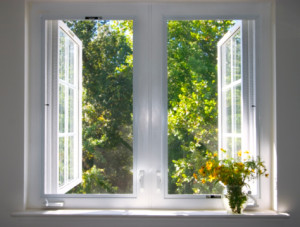What is IAQ? Does it Affect Me?
Indoor air quality is an important concern for any property owner

Removing the Source of Contamination
Common sources of indoor air contamination include:
- combustion heating systems (deadly carbon monoxide)
- pressed wood furniture, flooring and cabinetry (Volatile Organic Compounds and other chemicals)
- building materials (asbestos fibers, formaldehyde, other chemicals)
- pets (hair and dander)
- mold (spores and allergens)
- old paint (lead dust)
- household cleaners (VOCs and other chemicals)
If most cases, removing the material producing the contamination is the most effective way to improve the air quality in your home or business. When dealing with hazardous materials like asbestos, be sure to hire an authorized contractor to handle the removal and remediation.
Trapping Airborne Contaminants
All HVAC systems should be equipped with an inline filter to trap airborne contaminants. However, if you are experiencing problems with indoor air quality you may need a more robust filter system. HEPA filters can trap tiny particles to keep dust, allergens, and even bacteria from continuing to circulate inside your home.
Improving Ventilation
Insufficient ventilation can lead to problems with temperatures and humidity levels. This not only makes the building uncomfortable, but can also contribute to the growth of mold or fungus and the release of irritating spores, gases, and odors. Have a professional assess your ventilation system and see if improvements could help circulate air properly inside your building and provide fresher air. You can also try using an air conditioner or a dehumidifier to keep your humidity levels between 30 and 50 percent and inhibit the growth of mold. Be sure to also have your ductwork checked for leaks, as leaky ducts can suck dust from attics or basements into your ventilation system and spread it throughout the building.
Keeping Outdoor Contaminants Out
Some sources of indoor air contamination come from outside the home. While you can’t eliminate these sources entirely, you can make sure that they don’t enter your home. Common outdoor contaminants include radon, pesticides, smog, and pollen. Make sure your home is properly sealed to reduce unnecessary air exchange with the out of doors, and run your air conditioner fan rather than opening a window when slight cooling is needed.










